Test on oxygen and benzene contents in gasoline by mid-infrared spectroscopy*
JIANG Xu-feng(姜旭峰), ZHAO Yuan-li(赵媛莉), XIAO Yun-peng(校云鹏), SUN Jing(孙 静)
(Department of Material and Oil, Air Force Logistics College, Xuzhou 221000, China)
Test on oxygen and benzene contents in gasoline by mid-infrared spectroscopy*
JIANG Xu-feng(姜旭峰), ZHAO Yuan-li(赵媛莉), XIAO Yun-peng(校云鹏), SUN Jing(孙 静)
(Department of Material and Oil, Air Force Logistics College, Xuzhou 221000, China)
This paper aims at testing oxygen and benzene contents in gasoline by mid-infrared spectroscopy. The experimental results prove that infrared spectroscopy (IR) is reliable. Compared with gas chromatography (GC) technology, this paper draws a conclusion that IR has several advantages, including rapid analysis, excellent repeatability and low analysis cost.
oxygen; benzene; mid-infrared spectroscopy; gasoline; gas chromatography(GC)
At present, gas chromatography(GC)[1]and infrared spectroscopy(IR)[2-3]are commonly used quantitative test methods. The standard method of GC can be found in GB 17930-2005. It should be noted that GC has no advantages in terms of analysis time and sample processing. Therefore, top priority should be given to find a new efficient and fast method. Mid-infrared spectroscopy[4-6]and near-infrared spectroscopy[7-11]have several advantages, including rapid analysis, excellent repeatability, low analysis cost, and harmless sampling. However, near-infrared spectroscopy has not been popularized because of its low stability, complex model and other weaknesses. So IR we called always means mid-infrared spectroscopy.
In this paper, the contents of benzene and oxygen are tested by mid-infrared spectroscopy. The results prove that this method is more reliable than GC.
1 Experimental details
1.1 Apparatus, reagents and materials
1.1.1 Apparatus
Nicolet6700 Fourier transform infrared spectrometer, produced by Thermo Company in America; DLaTGS detector, optical length is 0.1 mm, spectral legion is 650 cm-1-4 000 cm-1and resolution is 4 cm-1; Smart Ark intelligent multiple horizontal attenuated total reflection accessory, produced by Thermo Company; DSY-636, a flame ionization detector, is used in gas chromatograph.
1.1.2 Reagents
Benzene(SP), toluene(AR), octane(AR), MeOH(≥99.9%), EtOH(≥99.9%), IPA(≥99.9%), NBA(≥99.9%), ethylene glycol dimethyl ether(≥99.9%), tBA(≥99.8%), NPA (≥99.8%), MTBE(=97.2%), sec-butyl alcohol(=96.9%), DIPE(=98.7%), IBA(≥99.8%), tert-amyl alcohol(≥96.4%), TAME(=98.8%), anaerobic gasoline, distilled gasoline, reformed gasoline, fluid catalytic cracking (FCC) gasoline.
1.2 Preparation of samples
Adding different amounts of benzene to low benzene gasoline (benzene contents 0.2 without MeOH) with adjustable micro pipette for the samples with different volume fractions, the volume fractions are 0.2, 0.5, 1.0, 2.0, 3.0, 4.0, 5.0 and 10.0. At the same time, preparing the samples with different volume fractions such as TOL solution(1.0%-20.0%), MTBE solution (1.0%-20.0%), EtOH solution (1.0%-15.0%) and tBA solution (1.0%-6.0%).
Taking gasolines A and B, more than 60% alkyls, 30% other fractions reform gasoline, and 10% light distilled gasoline is in gasoline A; more than 60% alkyls, 30% FCC gasoline, and 10% light distilled gasoline are in gasoline B. Picking out 7 types of compounds mentioned in section 1.1.2 and mixing them with gasoline A into 36 groups in different concentrations and oxycompounds.
1.3 Spectra collection
Taking 0.5 mL samples into ZnSe cell, making sure that there are no bubbles at the bottom, and putting tefion cap upon to reduce volatility. Scaning the infrared spectrogram in 650 cm-1-4 000 cm-1area for 32 times, and the resolution is 4 cm-1.
2 Results and analysis
2.1 Results of oxygen
2.1.1 Determination of absorption coefficient
Putting all the spectra of different components and absorption coefficients of specific contents into a matrix to get every absorption coefficient, as shown in Table 1.
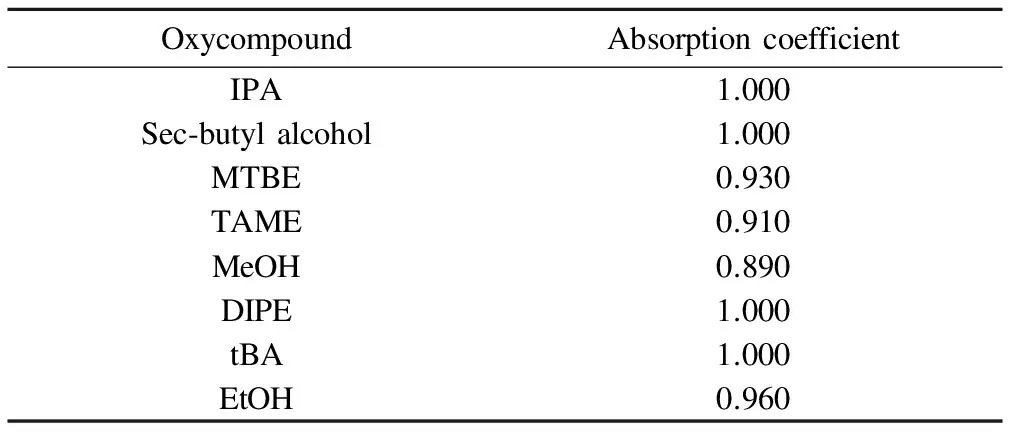
Table 1 Absorption coefficients of oxycompounds
2.1.2 Model construction and analysis of oxycompound
Picking out 8 samples with different oxycompounds and concentrations. The oxygen contents are tested, as shown in Table 2. From Table 2, we can conclude that the measured values are basically consistent with theoretical values, and recovery rates are in the range of 95%-105%, which shows the high accuracy of this method.

Table 2 Accuracy test

Fig.1 Relationship between expected value and true value of oxycompound
To examine the quantity analysis model of oxycompounds, we utilize calibration set and real estimated values of correlation coefficient. Correlation coefficient is the correlation characterization between measured value and theoretical value. The correlation will be better when it is close to 1. In the test, we take 22 oxycompoun samples, rejecting 2 unusual samples. The linear relation is shown in Fig.1. It can be seen that the linear relation is well between these two methods and the correlation coefficient is greater than 0.99.
2.1.3 Comparson of IR and GC
To examine the accuracy of IR, we compare the results of IR with that of GC by DSY-636 gas chromatograph for 7 times, as shown in Table 3. It can be seen that the deviation between IR and GC is less than 0.12, meeting the requirement of reproducibility.
Table 3 Comparision of analysis results between IR and GC
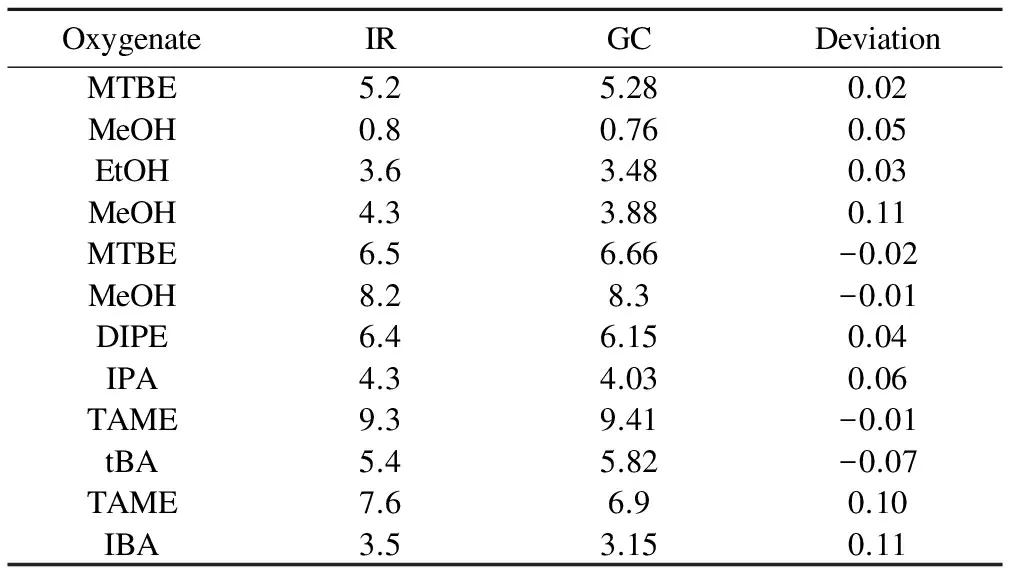
OxygenateIRGCDeviationMTBE5.25.280.02MeOH0.80.760.05EtOH3.63.480.03MeOH4.33.880.11MTBE6.56.66-0.02MeOH8.28.3-0.01DIPE6.46.150.04IPA4.34.030.06TAME9.39.41-0.01tBA5.45.82-0.07TAME7.66.90.10IBA3.53.150.11
2.2 Result of benzene
The infrared absorption spectra of benzene with different volume fraction are shown in Fig.2. Curves ①, ②, ③ and ④ stand for different benzene samples with volume fraction 0.5, 1.0, 2.0 and 4.0, respectively. Through the characteristic peak recognition, the best characteristic area of benzene is from 680.0 cm-1to 650.0 cm-1.

Fig.2 Infrared absorption spectra of benzene in 680 cm-1-650 cm-1 zone with different volume fractions
2.2.1 Model construction and analysis of benzene
In this section, we make use of TQ Analyst EZ Edition quantity analysis software to process the results, building the quantity analysis model by classical least squares (CLS). The test standards are correlation coefficient, root mean square error of calibration set and root mean square error of test set.
Model coefficient can be achieved by the cross validation. As shown in Figs.3 and 4, correlation coefficient is 0.992 6, root mean square error of calibration set is 0.104, and root mean square error of test set is 0.035. In these figures, measured values are the true contents of benzene, while theoretical values are the calculation result. The cross validation results show that the deviation between measured value and theoretical value is less than 0.3.
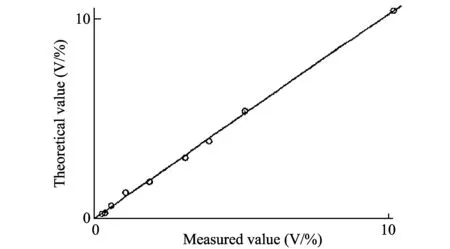
Fig.3 Scatter diagram of infrared spectrum between measured and theoretical value
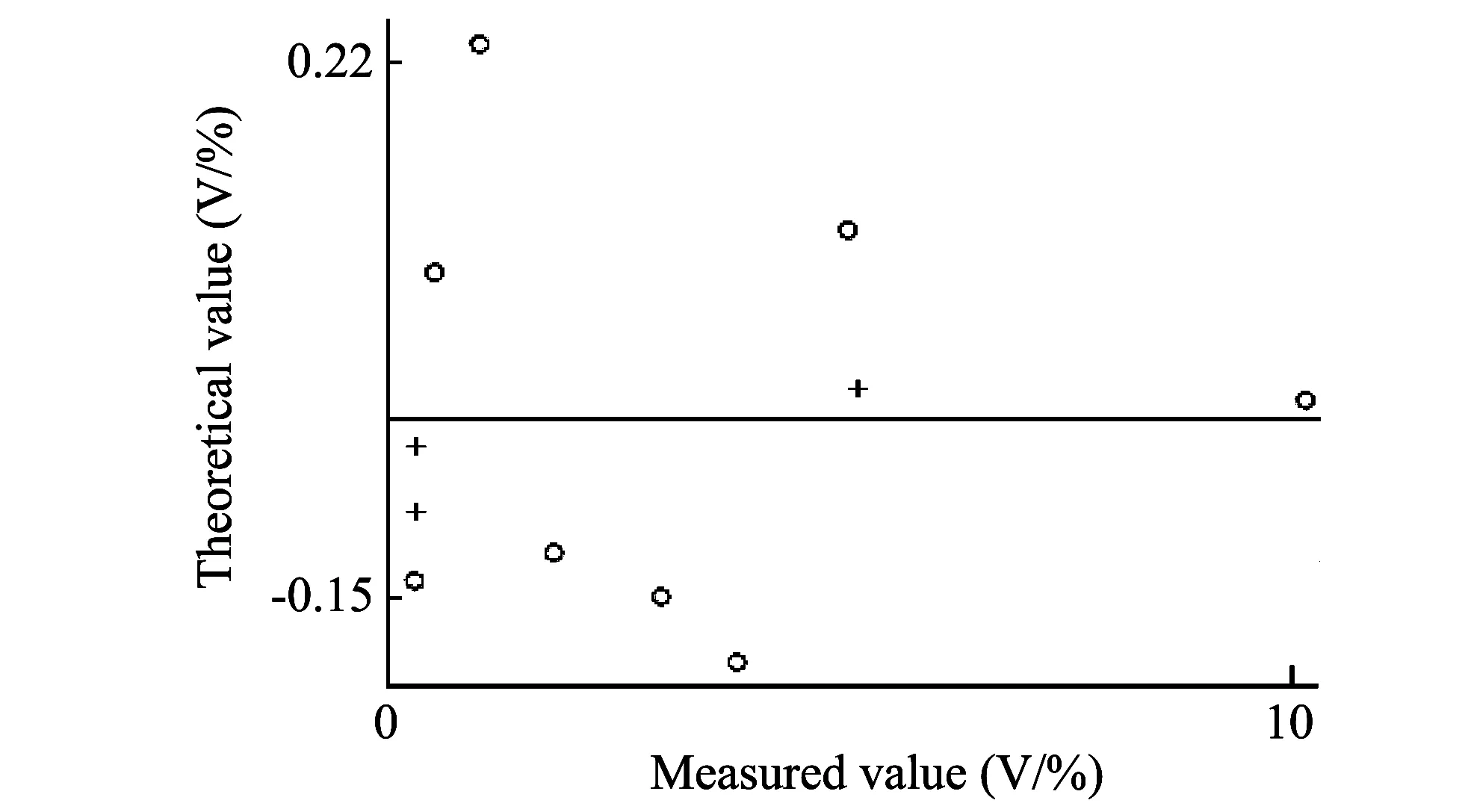
Fig.4 Differences of infrared spectrum between measured value and theoretical value
2.2.2 Comparson of IR and GC
To examine the accuracy of mid-infrared spectroscopy, we compare the results IR with that of GC by DSY-636 gas chromatograph in 12 different samples, as shown in Table 4.
Table 4 Comparison of analysis results between IR and GC
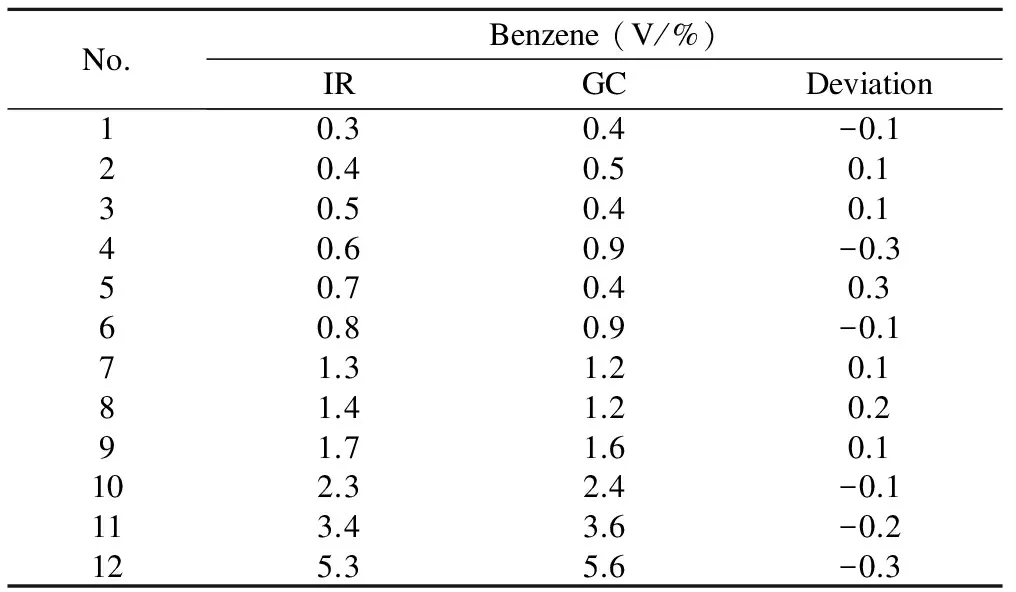
No.Benzene(V/%)IRGCDeviation10.30.4-0.120.40.50.130.50.40.140.60.9-0.350.70.40.360.80.9-0.171.31.20.181.41.20.291.71.60.1102.32.4-0.1113.43.6-0.2125.35.6-0.3
From Table 4, we can see that the deviation between IR and GC is less than 0.3, meeting the requirement of reproducibility.
3 Conclusion
In this paper, for the first time we test oxygen and benzenes by IR at the same time. Only in a few minutes, oxygen and benzenes can be determined, with advantages such as high analysis speed, excellent repeatability, low analysis cost and so on. The recovery walue can reach 95%-105% by standard material mixed and recovery test. The cosrelation between theoretical value and true value is well (correlation coefficient is greater than 0.99), which ensures the high accuracy of this method. Further more, the linearity is very well between mid-infrared spectroscopy and GC, the deviation between them meets the requirement of reproducibility.
[1] SINOPEC Research Institute of Petroleum Processing. SH/T 0663-1998 standard test method for determination of certain alcohols and ethers in gasoline by gas chromatography. 1998: 1-15.
[2] American Society of Testing Materials. AS/TM D4815-03 Standard test method for determination of MTBE, ETCE, TAME, DIPE, methanol and tert-butanol in gasoline by infrared spectroscope, USA, 1995.
[3] Wheeler O H. The application of mid-infrared spectroscopy. Journal of Chemical Education, 1960, 37(1): 234.
[4] American Society of Testing Materials. ASTM E 1655-05-2005 standard practices for infrared multivariate quantitative analysis, USA, 2005.
[5] WEN Huan, CHEN Yan, HU Jiang-yong, et al. Determination of aromatic and olefin in motor gasoline by mid-infrared spectroscopy. Chinese Journal of Spectroscopy Laboratory, 2011, 28(3): 1306-1310.
[6] ZHAO Sheng-hong, HUANG Yi, LIU Duo-qiang. The application of mid-infrared spectroscopy in oil analysis. Petrochemical Industry Application, 2009, 28(7): 6.
[7] ZHANG Shao-hua, WANG Yu-xin, TIAN Shou-fu, et al. Determination of benzene contents in reformate by near infrared spectroscopy. Modern Scientific Instruments, 2007, (3): 110-111.
[8] ZHANG Jun, JIANG Li, CHEN Zhe, et al. Study on the gasoline classification methods based on near infrared spectroscopy. Spectroscopy and Spectral Analysis, 2010, 30(10): 2654-2657.
[9] DAN Tu-nan, DAI Lian-kui. Methanol gasoline quantitative analysis based on NIR spectroscopy. Computers and Applied Chemistry, 2011, 28(3): 329-332.
[10] SHI Yong-gang, LIU Shao-pu, SONG Shi-yuan, et al. Near infrared analysis of major classes of hydrocarbon constituents in gasoline with least square-support vector machine. Journal of Instrumental Analysis, 2007, 26(3): 343-346.
[11] American Society of Testing Materials. ASTM D 4053-04-2004 standard test method for benzene in motor and aviation gasoline by infrared, USA, 2004.
date: 2013-04-21
JIANG Xu-feng (jiangziya@163.com)
CLD number: TN219 Document code: A
1674-8042(2013)03-0299-03
10.3969/j.issn.1674-8042.2013.03.021
 Journal of Measurement Science and Instrumentation2013年3期
Journal of Measurement Science and Instrumentation2013年3期
- Journal of Measurement Science and Instrumentation的其它文章
- Particle-filter-based walking prediction model for occlusion situations*
- Automatic estimation and removal of noise on digital image*
- Application of signal sparse decomposition in dynamic test*
- Kravchenko probability weight functions in problems of radar signals correlation processing*
- AC current automatic calibration using two different TCC designs*
- Smart decontamination device for small-size radioactive scrap metal: using abrasion pin in rotating magnetic field and ultrasonic wave cleaner*
